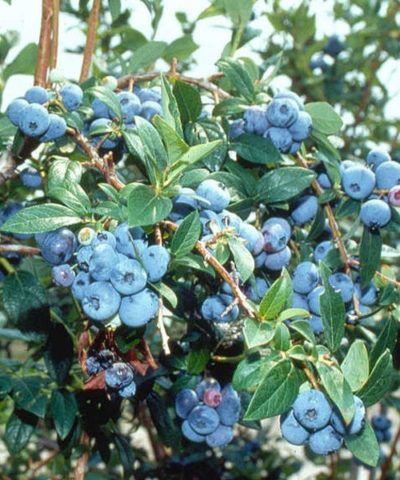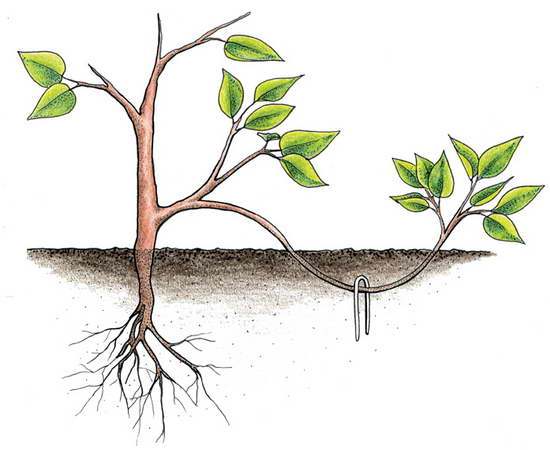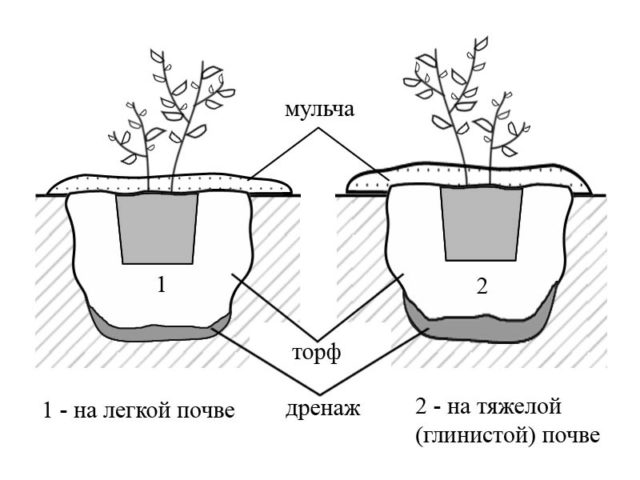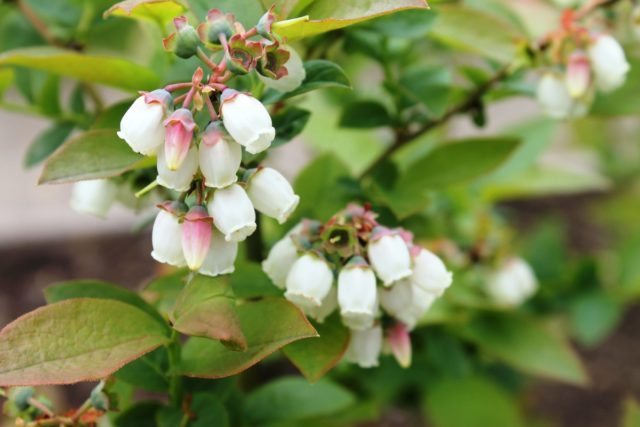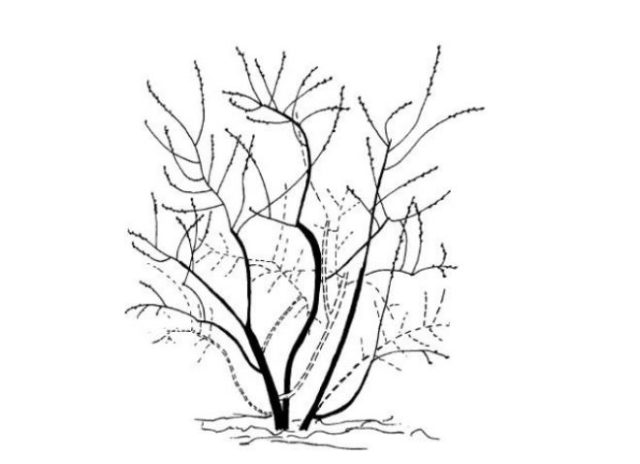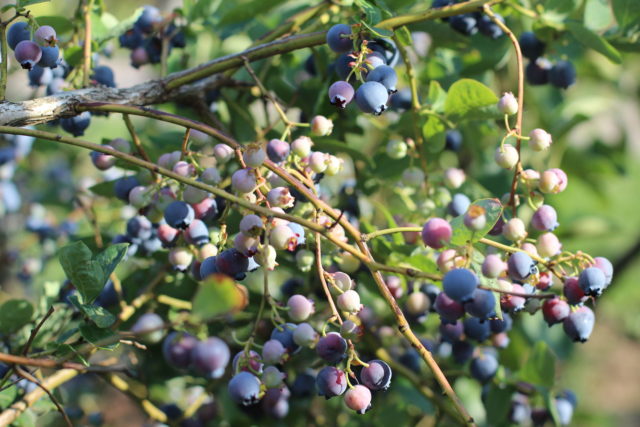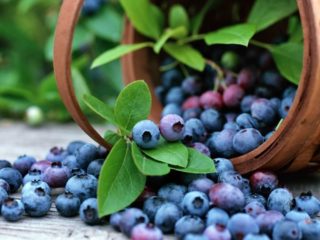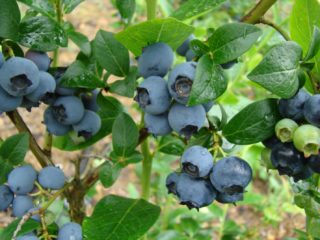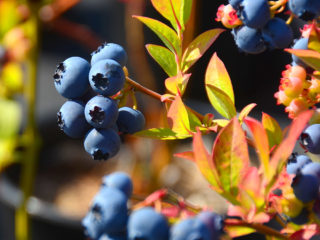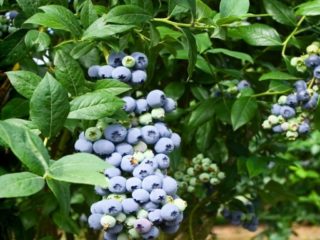Content
Blueberry Blurey was bred in the USA in 1955. The basis for the deduction was laid by the works of Frederick Kovylev, George Darrow, Arlen Draper. The variety does not appear in the State Register.
Description of the blueberry variety Blue Ray
Blueberry variety Blurey (pictured) - mid-season, tall. The bushes reach a height of 1.8 m, spreading. The leaves are dark green, rounded. Flowers are light pink.
Features of fruiting
The berries are large, deep blue in color, weighing about 2.2 g. The fruits begin to ripen from mid-July, the fruiting period is up to 2 weeks.
There is no need to plant a number of pollinating varieties, since Blurey is a self-pollinated variety. Blueberries are used to make jam, frozen, dried. It can be used for juicing, making jams.
Advantages and disadvantages
Like all horticultural crops, Blurey blueberries have pros and cons. Advantages:
- frost resistance, the bush is able to survive frosts down to -34 ° C;
- a rich harvest, more than 5 kg of berries are removed from each bush;
- decorativeness, manifested due to the abundant spring flowering.
The disadvantages include:
- excessive fruiting. Despite the rich harvest, the abundance of berries is considered a relative disadvantage, since it depletes the bush;
- spreading - it is impossible to plant several bushes tightly;
- exactingness to the acidity of the soil.
If blueberries are grown in the courtyard for personal purposes, then planting more than 1-2 bushes on the site is impractical. Abundant fruiting leads to difficulties in processing berries.
Breeding features
The most common way to start a blueberry of the Blurei variety in the country is to buy a seedling. It is possible to breed the plant yourself. Any kind of blueberry is propagated by three methods:
- layering;
- cuttings;
- seeds.
The first method involves the need to lay the lower individual branches on the ground, attach, cover with sawdust. After 2 years, the first roots will appear. The branch is separated from the bush, planted for growing.
The method of cutting blueberries of the Blurey variety involves harvesting cuttings in the fall. Then each is placed in a container with an acidic substrate, moistened, placed in a greenhouse with heating. Until spring, they regularly check and water future seedlings. When the plants are about two years old, they can be planted outdoors. Until then, they are kept only in a greenhouse.
Seed propagation is permissible from self-obtained material. Seeds are extracted from healthy, ripe berries, washed, dried. In winter, the material must be stratified - it is enough to stand in the basement or in the refrigerator. In spring, blueberries are sown in open ground, deepening by 1 cm. From above, they are mulched with sawdust, peat (layer 3 cm). The soil must be warm, from + 23 ° C. It is necessary to regularly loosen, water, weed the soil, until full shoots appear. Fruiting begins after 8 years.
Planting and leaving
Correct planting of a seedling is a guarantee of future health and good fruiting.Blueberry Blurey is no exception. Having landed on time, in a suitable soil, the gardener will provide the bush with better survival.
Recommended timing
Garden blueberries of the Blurey variety are planted in the ground either in early autumn or late spring. The timing of planting seedlings from a container is more flexible, however, July is not a suitable month.
It is advisable to cover autumn plantings for the winter with spruce branches.
Site selection and soil preparation
The right place for the plant is important. It should be a very sunny area, sheltered from the wind. It is permissible to enclose on the northern side of the planting of the Blurei shrub variety with a hedge.
Soil characteristics are also important. The earth must pass air and water well. Mixtures with peat, sand are suitable, but completely peaty soil is not recommended. The soil should be moist, but waterlogging can damage the seedlings and lead to their death. An unfavorable place for planting leads to a decrease in the yield of the bush, leads to crushing of the berries.
Landing algorithm
There are 2 common methods of planting Blurei berry bushes - in wells and in ridges. Landing in the first way is as follows:
- dig holes 40 cm deep, up to 1.5 m wide;
- fall asleep with a substrate from a mixture of coniferous humus, pine sawdust (it is permissible to replace needles), peat;
- the container with the seedling is soaked for 30 minutes;
- the plant is taken out, planted in a hole, deepening the root collar by 7 cm, and watered.
It is forbidden to add ash, compost, manure, humus, any alkaline fertilizers. Ridge landing is carried out according to the following algorithm:
- the soil is taken out to a depth of 10 cm, the width of the pit is 1 m;
- fill up the substrate, as for planting in wells;
- a Blurey plant is planted at the very top, creating ridges.
Growing and care
For the plant to be healthy and bear fruit well, proper care is necessary. The most important thing for blueberries of the Blurei variety is top dressing, watering, forming pruning.
Watering schedule
For blueberries of the Blurei variety to bear fruit well, it is necessary to water the bushes every 3 days. Each bush should take at least 10 liters. water.
It is permissible to organize drip irrigation, however, ordinary irrigation will still need to be used to acidify the soil.
Feeding schedule
Fertilizing the Blurei plant with mineral fertilizers is carried out according to a fixed scheme (as needed).
Age | Number of tablespoons |
2 years | 1 |
3 years | 2 |
4 years | 4 |
5 years | 8 |
6 and more years | 16 |
The lack of minerals is determined by the appearance of the Blurei plant:
- notdostnitrogen flow - growth slows down, leaves, shoots turn yellow, berries become smaller;
- phosphorus deficiency - leaf plates turn purple, nestle against the stem;
- lack of potassium - the ends of the leaves die off, the plants become stained, young shoots turn black, die off;
- lack of calcium - the leaves are deformed, the edges turn yellow;
- lack of magnesium - reddening of the leaves at the edges, the middle remains green;
- boron deficiency - the upper leaves become bluish, the veins turn yellow, the shoots stop growing, die off;
- lack of iron - the leaves turn yellow, the veins remain green;
- lack of sulfur - the leaf becomes yellowish-white, occasionally whitens completely.
Blueberries of the Blurey variety need soil with an acidity of 3.5–5. A deficiency, an excess of acid manifests itself in the same way - the bush stops developing, therefore it is important to regularly check the acidity indicator.
Blueberries are not fed with compost or manure. From natural acidic fertilizers, sphagnum moss or pine needles are used. An effective option is to acidify the water for irrigation. For this they prepare:
- solution of oxalic (citric) acid in a proportion of 1 tsp. for 3 liters of water;
- acetic acid solution, proportion - 200 ml per 10 liters of water;
- a weak solution of sulfuric acid, the proportion is 50 ml per 10 liters of water.
This will maintain a regular level of soil acidity, which is necessary for the health of the Blueberry variety Blurei.
Pruning
To form the skeleton of the bush, the shearing begins at the age of two. Branches with fruit buds are removed.
After reaching the age of five, old, diseased branches, branches near the base, lying on the ground, are removed.
All operations are performed in early spring, before bud break. Autumn pruning is permissible, which is carried out after all the leaves have fallen off.
Preparing for winter
Despite the high winter hardiness, it is advisable to cover the Blurey blueberries for the winter. The branches are bent to the ground, making sure that they do not break. Then they cover with burlap or spruce branches. In winter, it is advisable to add snow to the plant. It is prohibited to use plastic wrap for insulation.
Pests and diseases
Blueberry variety Blurei is resistant to pests, diseases, but occasionally, with care errors, it can get sick. Common diseases:
- late blight;
- gray rot;
- stem cancer;
- monilial burn;
- phomopsis wilting.
For prevention and treatment, blueberries of the Blurei variety are sprayed with fungicides, for example, "Trichodermin", "PhytoDoctor".
Pests on blueberries of the Blurey variety are rare; preventive treatment is inappropriate. It is allowed to remove damaged shoots and leaves from the bush.
Occasionally, blueberries of the Blurei variety can become infected with a spider mite and be attacked by caterpillars. To combat insect pests, insecticides are used: Apollo; Vermitek, Aktofit.
Conclusion
Blueberry Blurey is unpretentious, but planting and caring for seedlings will cause a lot of trouble, which will pay off in the long term.
